DOGEN CITY
A smart healthcarecity on the ocean.A smart healthcarecity on the ocean.
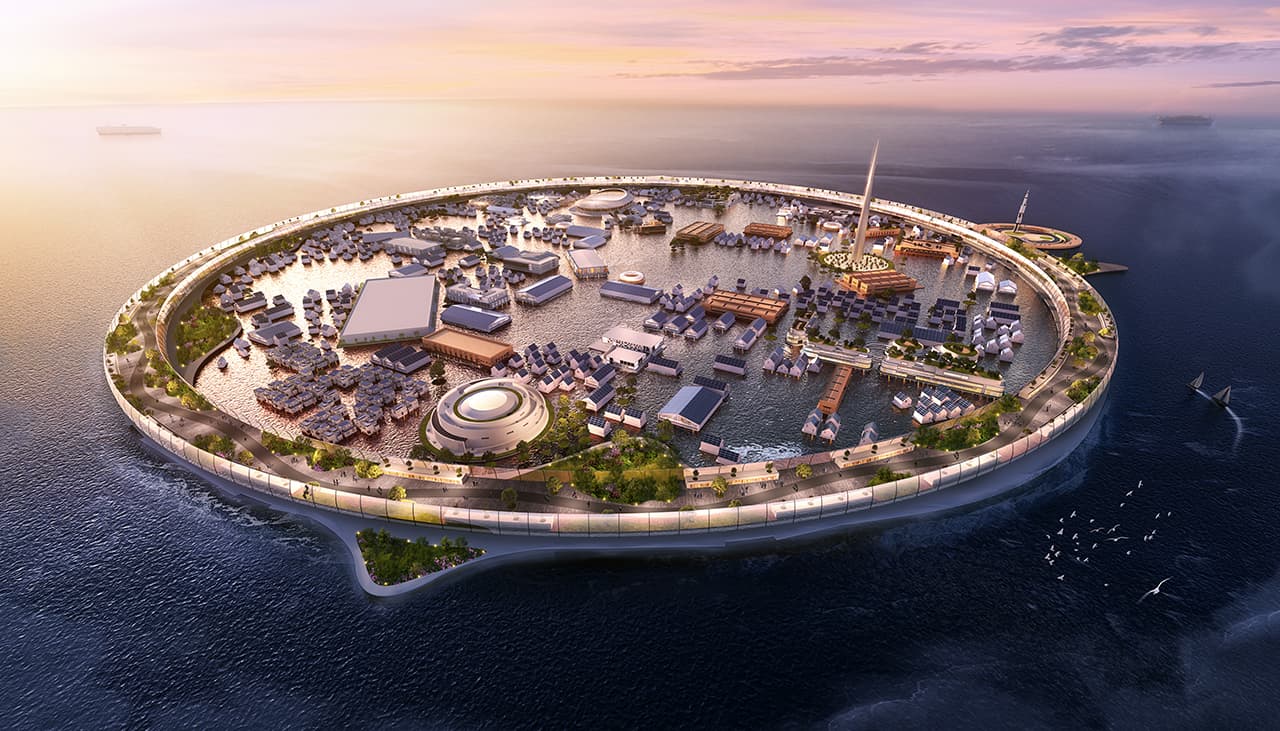
Dogen City is a smart healthcare city floating on the sea that integrates food environment, architecture, data, energy, and ocean resource with a focus on healthcare.

Dogen City is committed to the NEW OCEAN, an ocean business innovation promoted by industry, academia, and government. This has both a social impact (e.g., responding to natural disasters, improving the marine environment, and accommodating climate refugees) and an economic impact (development using new technologies and businesses in addition to traditional shipping, resources, and national defense).


Dogen City is 1.58 km in diameter and approximately 4 km in circumference. This size corresponds to the Japanese concept of "1 ri, 1 hour. With about 10,000 residents, the city functions at a city level, but the livability of the city is like that of a small village.
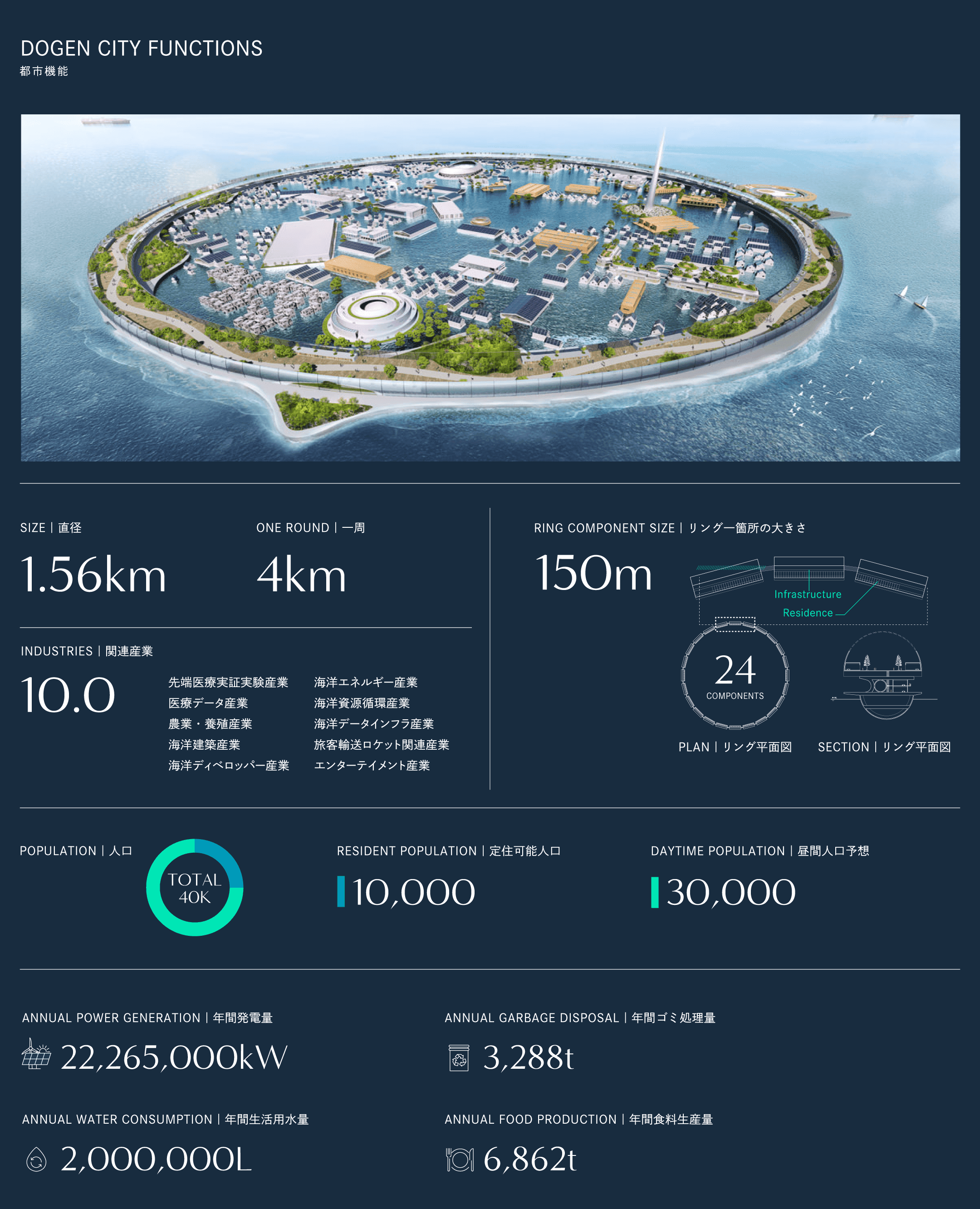

Dogen City is a sustainable city designed to function as a smart healthcare floating city in peacetime and as a stand-alone city in the event of a natural disaster.




Dogen City consists of three infrastructure products.
1. Habitable Ring :
Provides living infrastructure and public housing to make the zone habitable. Its shape, like a ship, protects the inner bay and protects it from tsunamis.
2. Undersea Edge Data Center :
Cooled underwater, it provides high value-added services such as urban management OS, healthcare data analysis, and drug discovery simulation while reducing energy consumption.
3. Autonomous Floating Architecture :
It can move freely in the inner bay, is not subject to land constraints, and allows for flexible reconfiguration of urban functions.
With these elements, Dogen City will be a smart healthcare city that responds to climate change and is based on a powerful data architecture to create a self-sustaining and sustainable maritime city.


Underwater Edge Data Center(Goal) | Terrestrial Data Center(Megacloud type) | |
|---|---|---|
| Location | 30~50m depth|Average annual temperature of about 15°CServer room temperature is 27~28°C, as excessive condensation can cause the circuit board to malfunction. Therefore, an average external temperature of about 15°C is considered appropriate. | Large remote areas |
| Size | Overall length: 20m, Exterior: 3mSame size as a 40-foot ISO shipping container to reduce environmental impact. | Approx. 2,634,000sq.m.※Domestic DC total floor space (as of the end of 2009) |
| Power and Specifications | 240 kW|approx. 20 kW per rackNumber of servers: 12 racks with 1782 servers | special high-voltage electricity exceeding 60,000 volts |
| Data round-trip delay | 1 to 5 ms | 253ms on average※Salesforce transactions per day|Assumed to be 100M |
| Traffic convenience and Failure rate | About 1/8 compared to Terrestrial DCsUsing materials with low PC corrosiveness to maintain cleanliness within the DC | Built within a 100 km radius of major population centers※Latency tolerance varies by DC application |
| Maintainability | Maintenance free|All servers are replaced every 5 yearsIn case of failure, extra servers can be used | Requires a location with good transportation accessibility※Based on the operator's operational track record and response to failures |
| Building and facility specifications | Low-cost construction + Compact and distributed edge DCProvide distributed DC services integrated with maritime city OS | Increasing trend of building cost = centralized typeDue to demand for specs that meet global standards |
| Disaster preparedness | In the case of Japan, underwater anchoring is necessary due to the risk of submarine earthquakes. | Location with low risk of natural disasters such as earthquakes and tsunamis required. |
| Security | EMP attack response, cyber-terrorism response.EMP defense, cyber-terrorism, and stealth functions based on submarine technology. |
Residents of Dogen City can receive telemedicine daily by managing and analyzing their living area data through the urban OS "Dogen" from ring devices, blood samples, and genome analysis. Furthermore, when combined with medical data and genome data, the health status of individuals can be more accurately evaluated. Advanced medical care, such as drug discovery simulations and remote robotic surgery, can also be received through computational processing at the undersea edge data center.
Dogen City will offer healthcare and medical tourism combining foodstuffs produced by seawater agriculture and aquaculture complexes, cuisines, and seawater thermal springs. It will also host natural disaster victims and climate refugees and provide advanced education.
- 01
Telemedicine
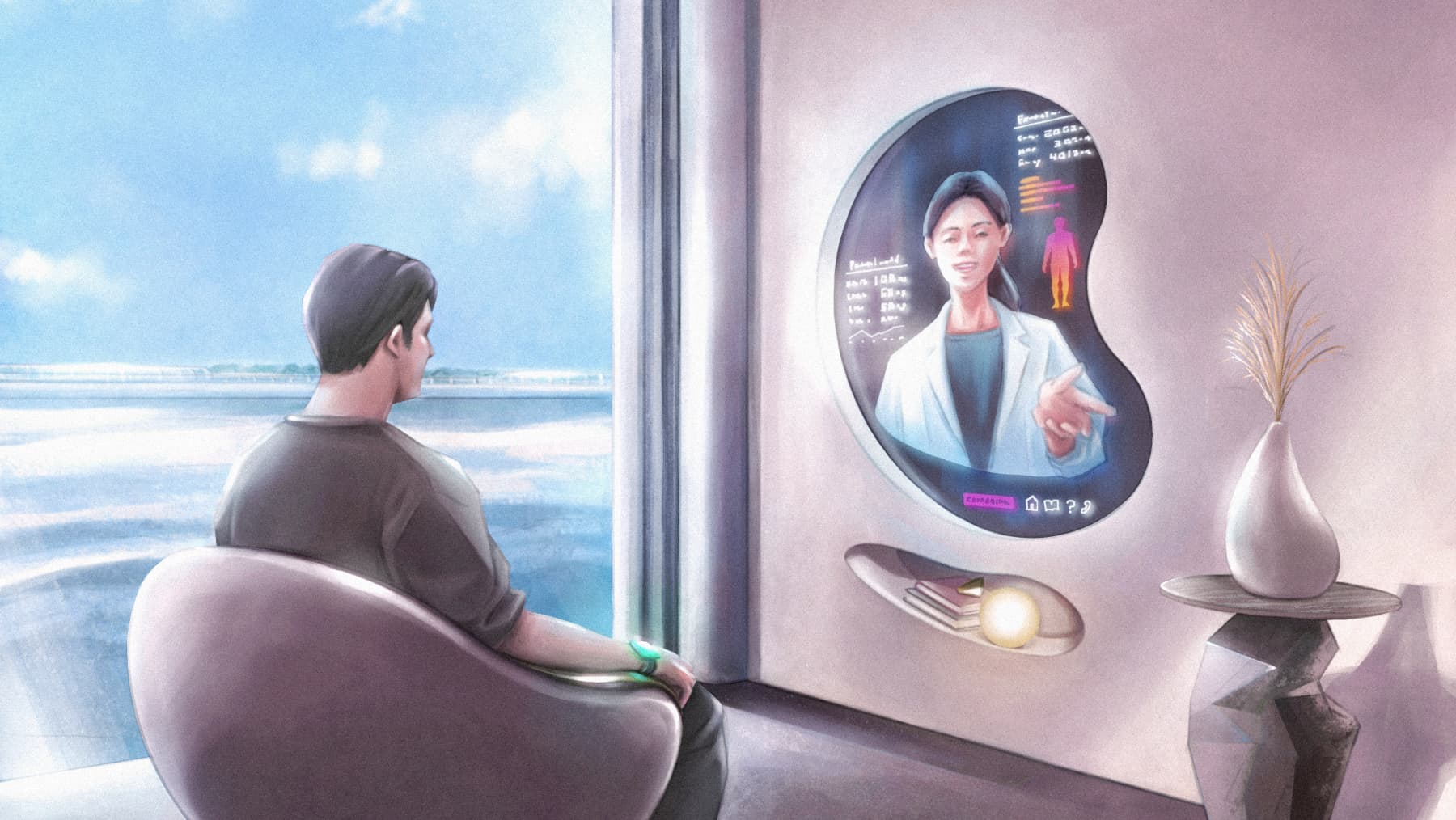
Realization of a disease-free society through telemedicine based on living area data.
- 02
Medical Edge Computing
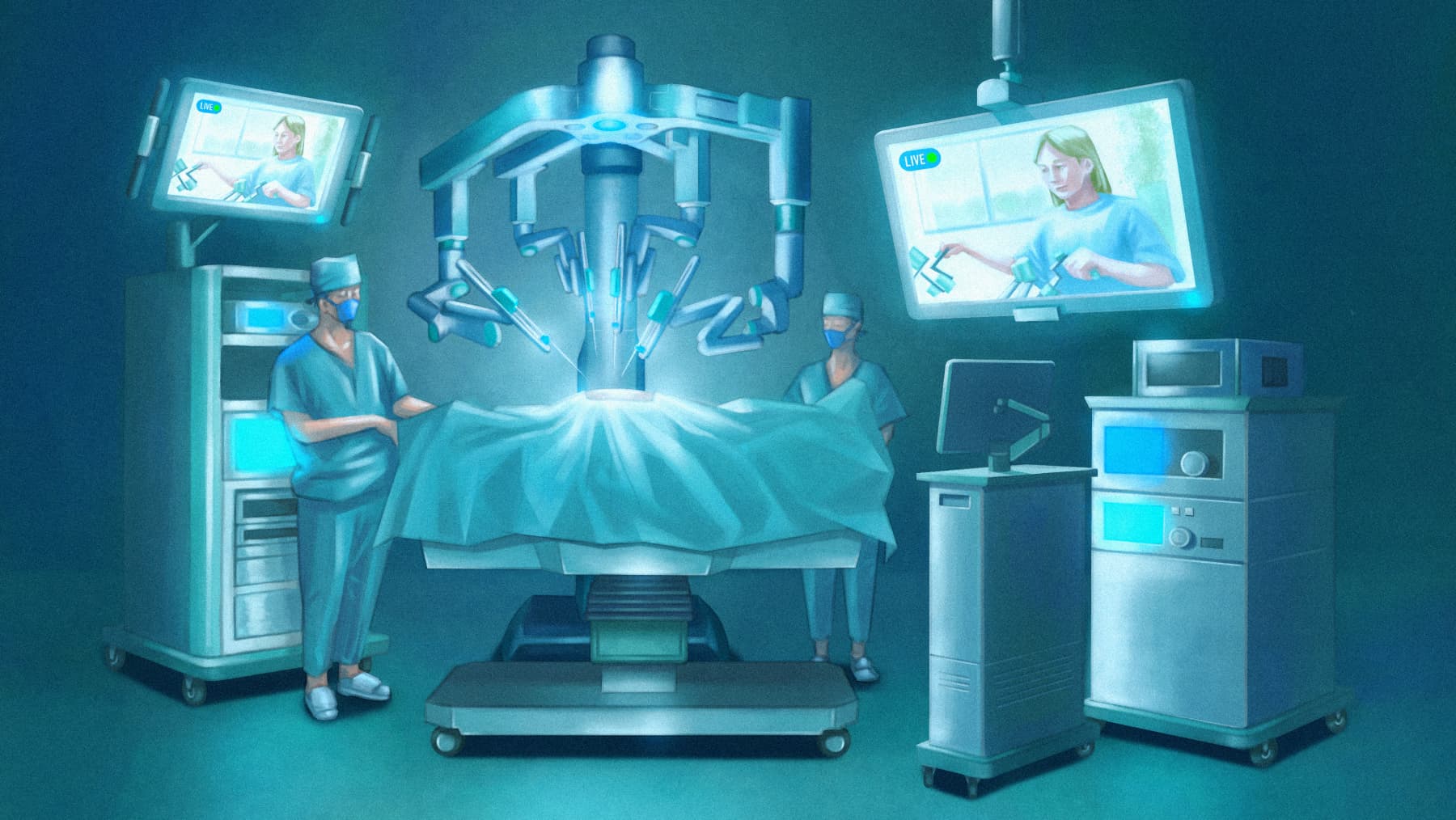
Medical Innovation through Edge Computing.
- 03
Medical Tourism

Medical Foods and Cuisine Nurtured in Maritime Cities.
- 04
Food Is Medicine
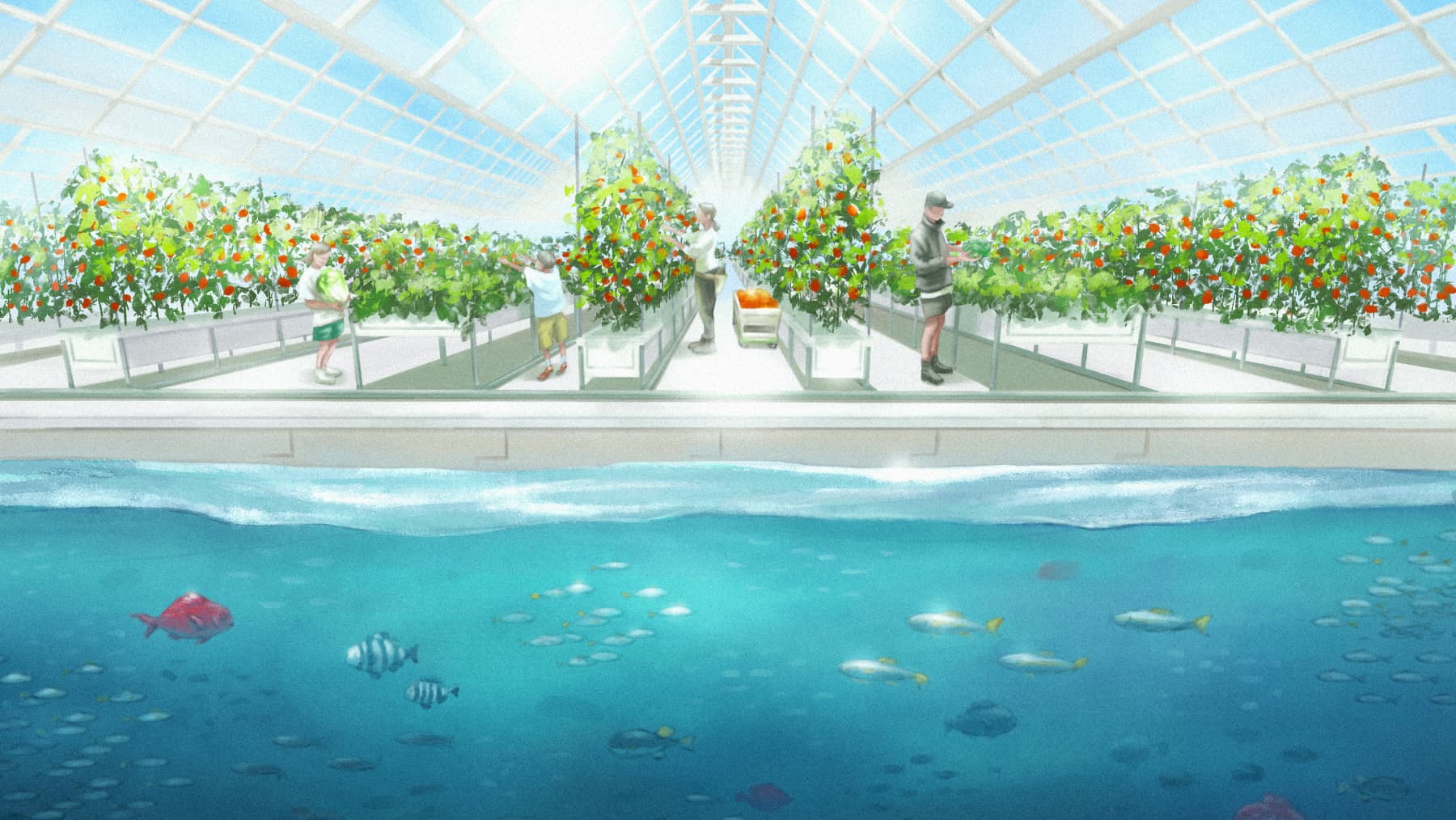
Culinary experiences and food production that embody medical cuisine.
- 05
Natural Disaster Solution
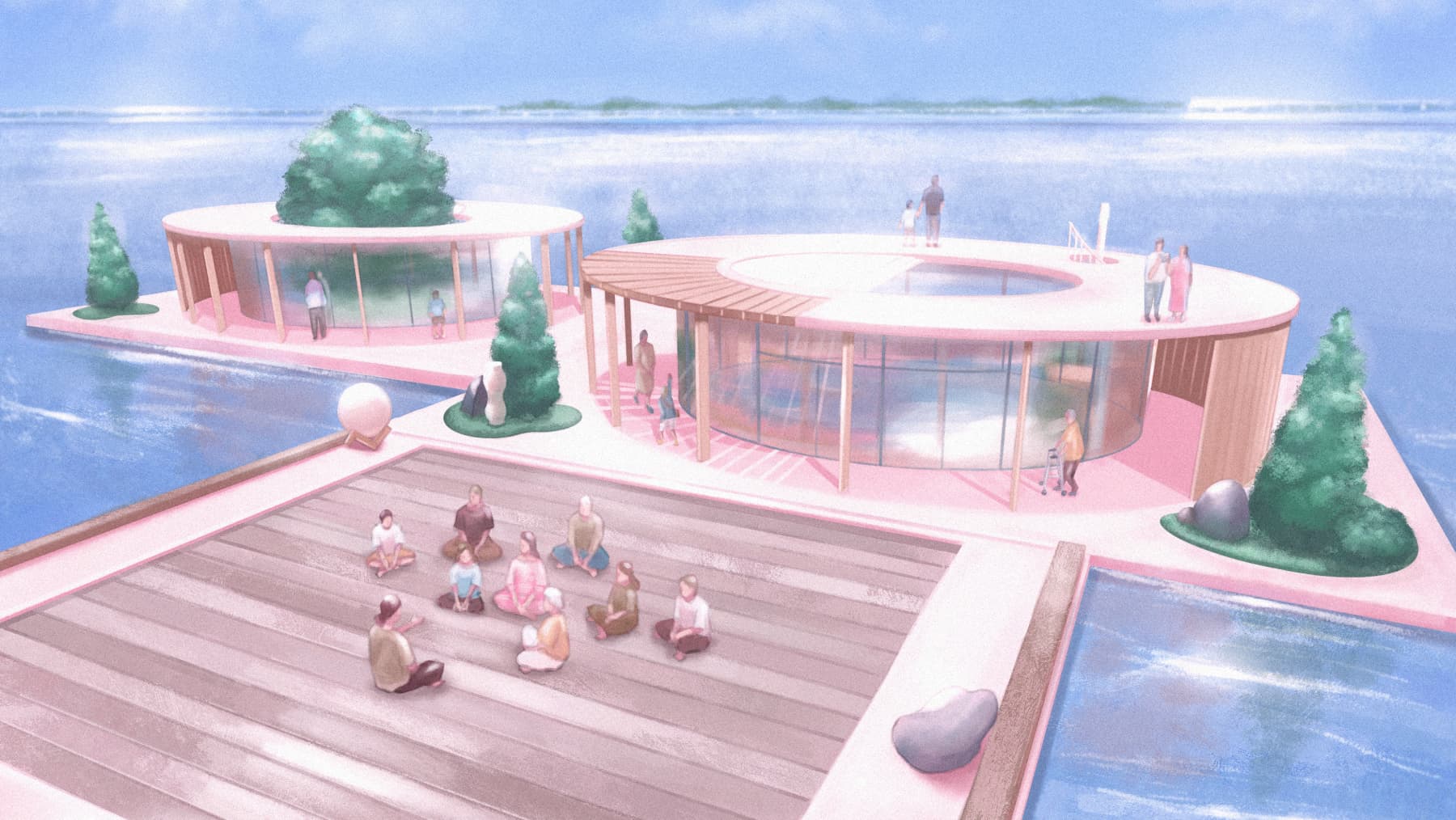
Evacuation site function for natural disasters such as earthquakes, floods, and tsunamis
- 06
Climate Refugees Solutions

Acceptance of Climate Refugees and Human Resource Development through Advanced Education.